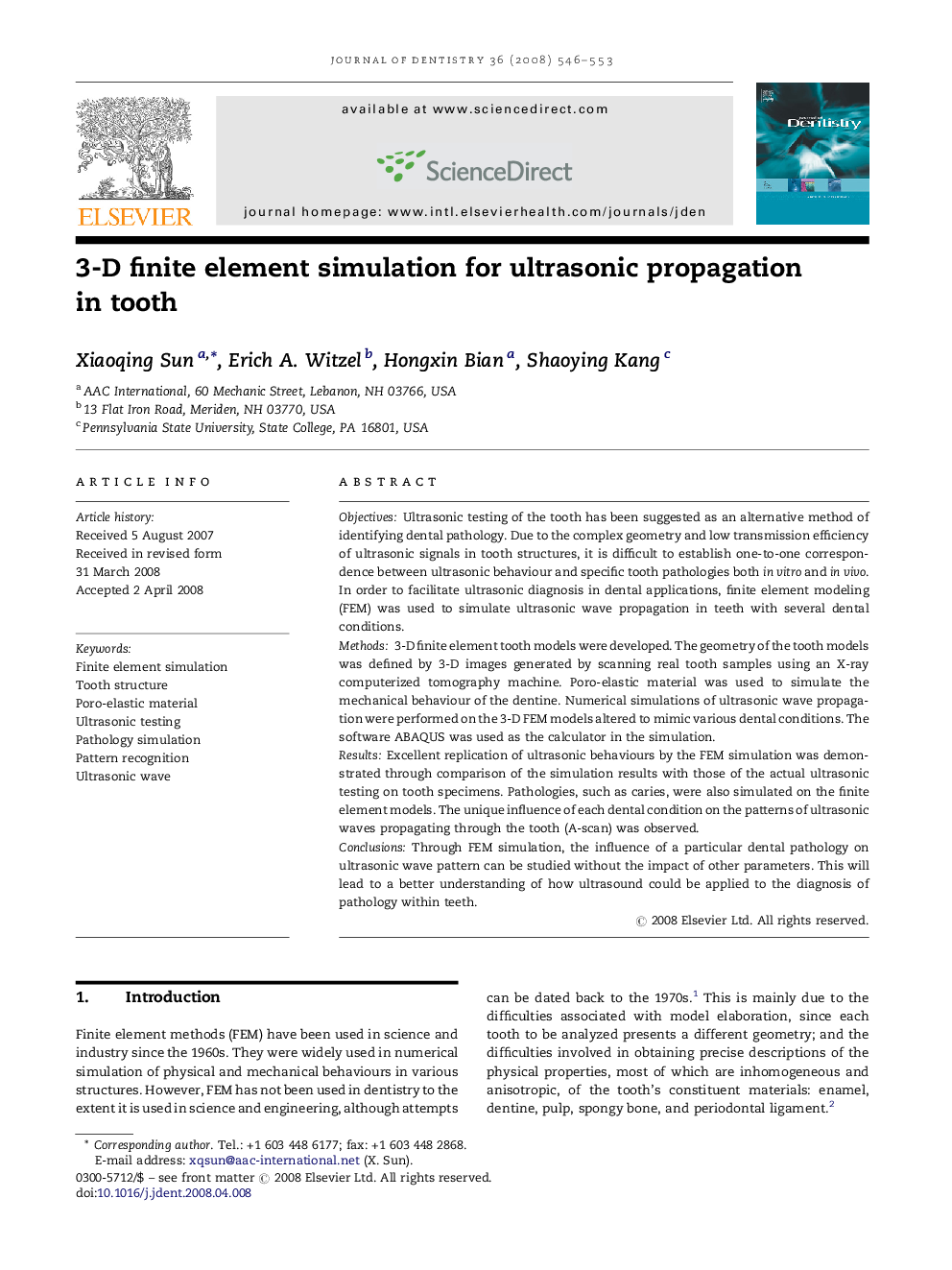| Article ID | Journal | Published Year | Pages | File Type |
|---|---|---|---|---|
| 3145895 | Journal of Dentistry | 2008 | 8 Pages |
ObjectivesUltrasonic testing of the tooth has been suggested as an alternative method of identifying dental pathology. Due to the complex geometry and low transmission efficiency of ultrasonic signals in tooth structures, it is difficult to establish one-to-one correspondence between ultrasonic behaviour and specific tooth pathologies both in vitro and in vivo. In order to facilitate ultrasonic diagnosis in dental applications, finite element modeling (FEM) was used to simulate ultrasonic wave propagation in teeth with several dental conditions.Methods3-D finite element tooth models were developed. The geometry of the tooth models was defined by 3-D images generated by scanning real tooth samples using an X-ray computerized tomography machine. Poro-elastic material was used to simulate the mechanical behaviour of the dentine. Numerical simulations of ultrasonic wave propagation were performed on the 3-D FEM models altered to mimic various dental conditions. The software ABAQUS was used as the calculator in the simulation.ResultsExcellent replication of ultrasonic behaviours by the FEM simulation was demonstrated through comparison of the simulation results with those of the actual ultrasonic testing on tooth specimens. Pathologies, such as caries, were also simulated on the finite element models. The unique influence of each dental condition on the patterns of ultrasonic waves propagating through the tooth (A-scan) was observed.ConclusionsThrough FEM simulation, the influence of a particular dental pathology on ultrasonic wave pattern can be studied without the impact of other parameters. This will lead to a better understanding of how ultrasound could be applied to the diagnosis of pathology within teeth.
